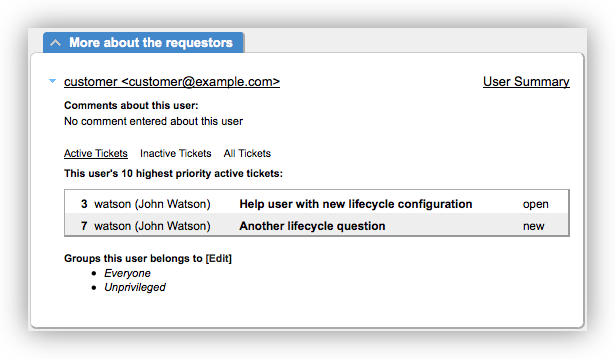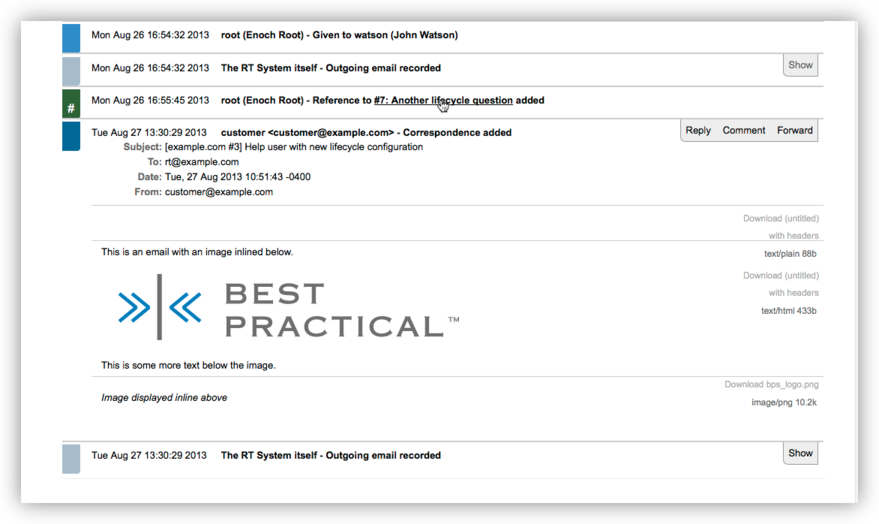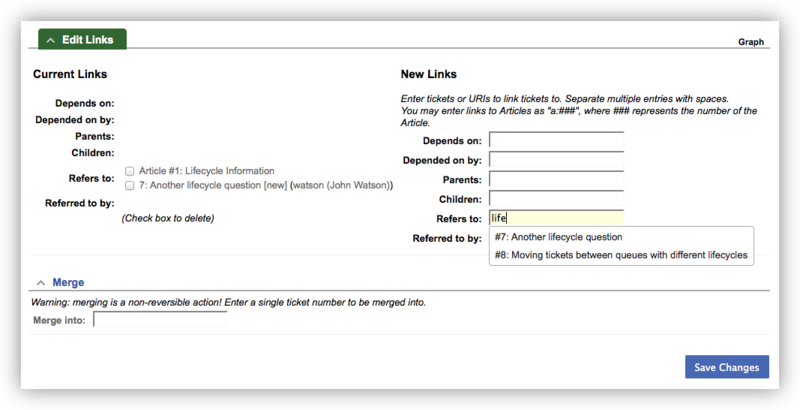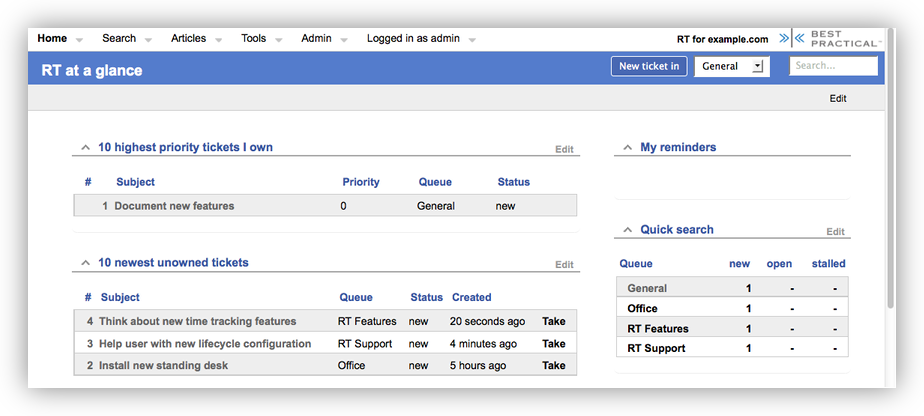RT allows you to send HTML email from notification templates and in RT 4.2 we're improving HTML support and providing HTML versions of all of the standard templates. New RT installs will default to using the new HTML templates. If you are upgrading an existing RT instance, your existing templates will be left in place, and the new HTML templates will be installed so you can switch to them when you're ready.
As described in the upgrade notes, we have also provided some convenient scripts to switch to the HTML templates and back to text. To switch to HTML templates, run:
/opt/rt4/etc/upgrade/switch-templates-to html
To switch from HTML back to text, run:
/opt/rt4/etc/upgrade/switch-templates-to text
When sending HTML email, RT automatically makes the outgoing messages multipart, allowing recipients who can read only plaintext to still get email they can read, while users with HTML-capable clients to see the HTML version.
Creating HTML Emails
Coding HTML in email can be challenging since the HTML support in various email clients varies widely. In many ways you need to put aside modern web design techniques and design more like it's 1999 (or maybe 2003). But it's worth the effort since HTML email can give your correspondence with customers a more polished look. The new HTML templates provide you with a start and you can build from those.
To start, you might add a header image that identifies you or your organization immediately for recipients. Much like a website, the header and footer are convenient places to put links to other useful resources like FAQs, your home page, or other web resources.
If you plan to include images, you'll need to host the image on a web server that your users can access. You may want to put the images on a world-accessible web server, like your main web site, since some customers may not have access to your RT server. Also keep in mind that many email clients are initially set to not display images by default and keep that in mind when designing your email.
Even with the mixed email client support, you can still use CSS in your design. However, your email is likely to render in more clients if you use inline CSS, something you have likely avoided in web design. You'll also want to use table-based layouts to make sure the email renders properly in more email clients.
Mobile devices have become ubiquitous so you need to also consider mobile email clients. The good news on this front is that many of the email-capable devices have fairly good support for HTML standards, often better than PC-based email clients.
Given the number of email clients available, you'll want to determine what clients are most used by your customers and test on those platforms. If you are in a managed IT environment, you might be able to reliably narrow it down to the official company email client. If you have more variation in your customer pool, pick the more widely used and available clients and test with those. Don't forget popular web-based clients like GMail.
We hope these tips are enough to get you started and encourage you to try customizing the default RT templates to personalize your correspondence with customers. You can find more information on working with templates in general in the RT template documentation.
Read the RT 4.2 new feature overview for information on more new features.






